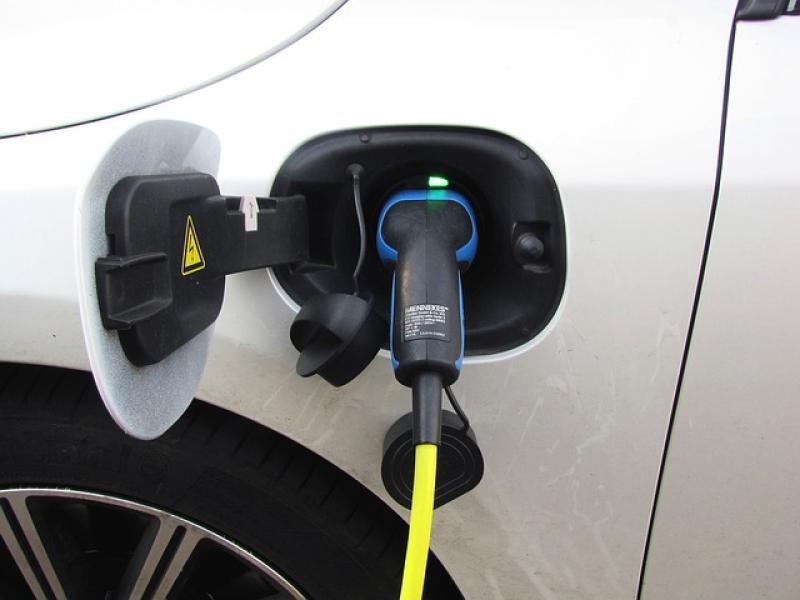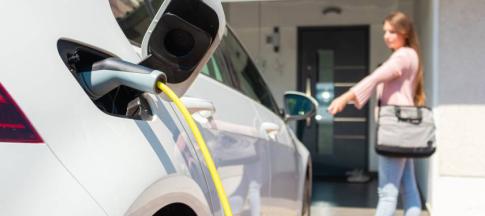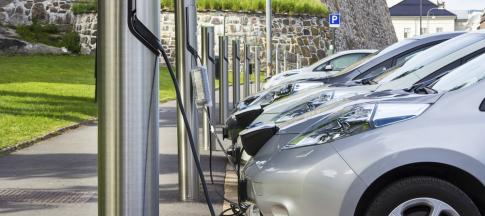
Electric vehicles (EVs) are the future, yet common misunderstandings are proving hard to shake off.
As the upcoming petrol car ban makes all of us consider our driving future, we want to help settle EV-related anxiety.
With the help of Professor Peter Wells, Professor of Business and Sustainability at Cardiff University and Director of the Centre for Automotive Industry Research, we fact-check misconceptions about range to misplaced health and safety concerns.
Below are 14 common EV myths and the truth.
Myth 1: EVs aren’t good for long distances
Technically yes, but context matters.
A fully charged EV, on average, has less range than a petrol car with mid-priced EVs offering about 200 miles on one full charge.
The average car travels around 28 miles per day for the first three years, so 200 miles is more than enough for most drivers.
For the average Brit, charging the car once a week is enough. EVs show their real-life convenience in the following data from the RAC. In the first three years:
- Diesel cars cover 10,377 miles per year
- Petrol cars cover 7,490 miles per year
- EVs cover 9,435 miles per year
Also, batteries and infrastructure are improving, leading to better ranges and performance. You can even plan your journey around charging points with tools like Zap-Map.
Myth 2: Electric cars are too expensive
If you look at the total cost of ownership, an EV's running costs are much cheaper.
Pure electric cars may have higher upfront purchase costs than their petrol and diesel equivalents. However, you could save around £650 a year in tax (they are zero-rated) and fuel (electricity is about a third of the price as petrol/diesel) if you choose an EV over a conventional vehicle.
Also, maintenance costs are generally less because there are fewer moving parts, which means less can go wrong.
Electric vehicles don’t need oil, have longer service schedules and benefit from reduced wear and tear on key items such as brake pads and discs due to regenerative braking systems.
Take a look at our car cost calculator to see how much you could save by switching to an EV from a petrol or diesel car.
Our car journey calculator, too, can show how much you can save on your daily commute by switching to an EV.
Myth 3: You need specialist insurance
Most insurers offer cover for EVs. Sometimes it’s a specialist product, other times it isn’t.
Our electric car insurance includes everything you’d get in the usual car insurance cover with the addition of:
- charging cable cover
- battery cover
- a 24-hour specialist helpline
Electric cars are the future and, naturally, insurance will follow.
Myth 4: You can’t charge two EVs at once
Yes. A charge point can only charge one car at a time.
If you need more than one charge point at your home, you’ll need to upgrade your home’s electricity system.
You’ll have to contact your distribution network operator (DNO) to upgrade, and it can be costly.
As long as your home can manage the load, then it’s fine.
You can charge at public points. If you need to charge two cars, then you’ll need two separate public points.
It’s worth noting that charging from 0% to 80% takes as much time as 80% to 100%. If you’re in a rush and need to charge two cars, then charge both to 80.
Myth 5: EVs use more energy when the weather’s cold
No, they don’t.
The battery is a chemical device, and chemical reactions are usually faster when the temperatures are higher. Batteries are slower in cold weather, meaning EVs can take longer to heat up. This doesn’t mean they use more energy when cold.
Just because something takes longer to turn on doesn’t mean it uses more energy.
You can also pre-heat EVs when they’re attached to make the process quicker.
Petrol or diesel cars heat up faster but are actually less efficient. This is because they produce more waste heat.
It’s worth bearing in mind that Norway has the highest market share of new EVs where cold weather driving is hardly the exception.
Myth 6: Using heating/air con/wipers/radio drains your battery quicker
Yes and no. Your radio and wipers won’t drain your battery quicker, but heating and air-conditioning will. This is the same as petrol and diesel cars where using air-conditioning increases fuel consumption by 4%.
So EVs aren’t unique in this respect. It’s more noticeable in an EV because the indicated available range will fall.
However, many EVs include an eco-mode to reduce acceleration and makes braking more efficient meaning you can heat your car and use other systems without draining the battery quickly.
Myth 7: EVs lose charge if you don't use them
Yes, but it isn’t a significant amount.
EVs lose around 1-3% of capacity every year, which is less than initial expectations.
So, if you buy a used EV, check the remaining battery capacity when buying one. If the battery capacity falls below 70% of the original capacity, it’s no longer suitable.
To prevent charge loss when not in use, you should:
- charge the car to between 50% and 80% capacity
- put the car in “deep sleep” or hibernation mode
Also remember to store EVs away from extreme heat and cold as this can impact the battery’s lifespan.
Myth 8: EVs can't tow trailers and caravans
EVs aren’t tested or approved for towing. However, technically, EVs can tow trailers and caravans. All EVs are automatic, so full torque is available from standstill.
Manufacturers don't test EVs for towing as it substantially reduces range, and even with large EVs with big batteries, the available distance falls off rapidly.
Additionally, the extra weight from towed items increases the demands on the regenerative braking system, which could lead to damage.
Myth 9: There isn't enough power in the grid to charge every EV vehicle
There’s currently enough supply for every EV vehicle, but demand and capacity can change.
By 2040, EV growth could increase total UK electricity demand by 25%, but the UK is already expecting higher electricity demand as we all switch to EVs, induction hobs, and heat pumps.
However, with 75% of people charging at home, you can choose to charge your EV when electricity demand from the grid is lower, aka ‘non-peak hours’. This means suppliers can ‘smooth’ the demand into existing capacity without needing new sources of electricity.
EVs can also store energy to sell back to the electric grid, which makes them even more energy efficient.
Myth 10: It's not safe to drive an EV in the rain or through a car wash
There's no extra risk compared with driving a petrol or diesel fuelled car.
A 2019 survey by car manufacturer Hyundai revealed that one in five petrol and diesel car owners said they were put off going electric because they were worried about driving in adverse weather conditions, such as a lightning storm.
However, as with fears over using a car wash or driving through puddles, there’s no need to worry.
Electric vehicles' battery packs and electrical systems are sealed and isolated, meaning they’re protected from the elements. Plus, EVs have to undergo the same rigorous safety and crash testing as any conventionally fuelled vehicle.
Myth 11: Charging EVs can cause explosions or fires
No. A major study in the US found fire risk from EV charging is comparable to or lower than when putting petrol in a car.
Similarly, there are a few reported incidents of battery fires after a collision, but generally, occupants are safe in an EV.
What to do if you experience an EV battery explosion
If charging at home, your home’s electricity system should cut off if your EV catches fire. But if the car parks near the house, there’s a clear risk of the fire spreading from the car to the house.
It’s not advised for EV owners to attempt to extinguish a fire themselves. Battery fire is difficult to handle. Let it burn out; you can't extinguish it at home.
You shouldn't drive with a damaged battery, either. Place all EV batteries no longer in use in safe containers for storage and transport.
Contact the emergency services as soon as you notice a battery fire, explosion or leak.
Myth 12: Electric car batteries take too long to charge
This isn't true. Rapid chargers can add as much as 80% of charge in as little as 30 minutes.
Some car chargers are more powerful than others. For instance:
- 7kW (most commonly found in homes) is best for an overnight charge
- 22kW (usually found in supermarkets and shopping centres) is good for a top-up
- 50kW/100kW/150kW are the best options on a journey
For instance, the affordable MG ZS EV (which has a 163-mile range) takes approximately 40 minutes to achieve an 80% charge from zero using a 50kW DC public charge point.
Meanwhile, a 100kW rapid DC charging point will deliver up to 78 miles of range from just 15 minutes if you own a Jaguar I-Pace.
Myth 13: EVs cause motion sickness
No, EVs drive smoother than petrol or diesel cars.
The battery and motor on an EV are lower down the car, mean to less lurching from side to side when cornering. If anything, they cause less motion sickness than petrol or diesel cars.
Myth 14: EVs are too heavy for multi-storey car parks
No. EVs aren’t too heavy for multi-storey car parks.
These structures, like roads and bridges, are built to withstand much greater loads than even the heaviest EV.
On average, an EV weighs 200-300kg more than a petrol car because of the weight of the battery and electric motors. However, a large petrol or diesel car weighs more than an average-sized EV.
I'm an experienced journalist, digital editor and copywriter, now specialising in motoring. I’m editor of Automotive Blog and have worked across the media in newspapers, magazines, TV, teletext, radio and online for household names including the BBC, GMTV, ITV and MSN. I’ve produced digital content in the financial sector for Lloyds Bank, Nationwide and the Money Advice Service. I'm married with two children and live near Bath in Somerset.


